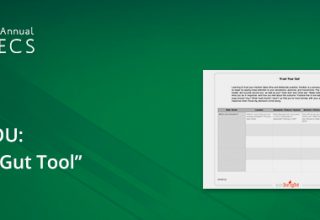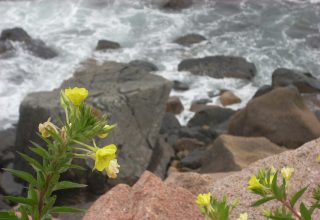
“I feel there are two people inside me: me and my intuition. If I go against her, she’ll screw me every time, and if I follow her, we get along quite nicely.”
~Kim Basinger
This brief article is excerpted from a weekly ezine (“Monday Morning Muse”) offered by The Coaching Corporation. Each Muse has been prepared under the guidance of Inga Estes, president of The Coaching Corporation.
Intuition is a dynamic resource that works on seemingly infinite bits of randomly connected data. Intuition is also called hunches, gut feelings, and just “knowing.” Often we don’t know why we know what we intuitively are certain about.
In another part of our brain, analytical thinking is all that intuition is not. It’s based on what we know that we know–it is a finite pool of knowledge. Analytical thinking works on demand and we can make it happen. Intuition is completely different. We can only tune-in and pay attention to it; it’s always on.
We need both intuition and analytical thinking, and we need to understand their differences and capacities. Donald Trump says that the essential ingredients of his success are intuition and positive energy. How is that possible? Doesn’t he just analyze, analyze, analyze? Apparently not.
In our culture we are drawn to analytical thinking like ants to honey. Analysis is important, no doubt about it, as it’s the brain center from which we write, build, walk and fly. We go a little overboard, though, when we expect to ourselves to figure out everything through analysis.
Analytical thinking is wonderful when we have all the information. We can analyze and make a logical decision based on what we know . . . if we have all the information. Analysis paralysis is a cliche that sums up what happens when we get stuck in this mode of thinking when we either have too much or not enough data. It’s not always the best, and never the only way to decide what we should do next or which direction we should take. Yet, if we can’t figure out something, we stress; if we don’t know the answer, we feel stupid (stay tuned).
Free-flowing thinking–the other side of our brains–is the home of intuition. It includes data from the analytical side, taps into the emotional center, and taps into the oldest reptilian parts of our brains. In this mode, solutions and ideas come to us seemingly out of the blue. Free flowing thinking is the home of creativity, wisdom, positive energy, love, joy, and peace.
Free-flow thinking gives us insight and works from instinct. When we don’t have all (or too much) of the information, it’s often a better way to go. When we learn to trust our intuition, we have greater capacity to make wise choices that we can’t always explain through logic.
Learn to use both modes of thinking. Try another tack when analysis isn’t working. Slow down for just a few seconds and listen to the quiet, intuitive part of your brain to check if there’s not another option. Pull your analytical thinking off to the side and see if you can tune in to the free-flowing thinking mode instead. Your intuition might just have something refreshing to offer.
Download Article
















